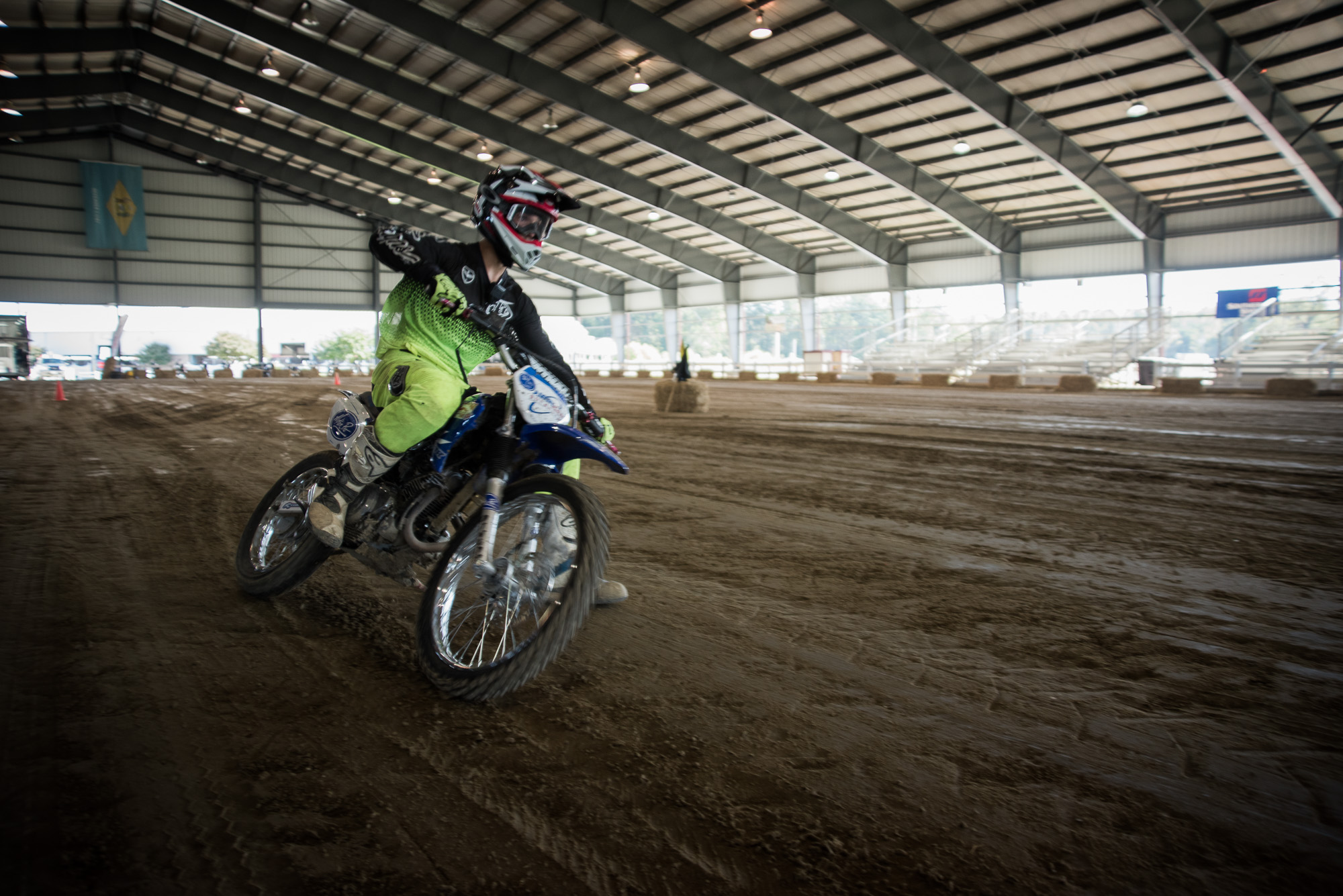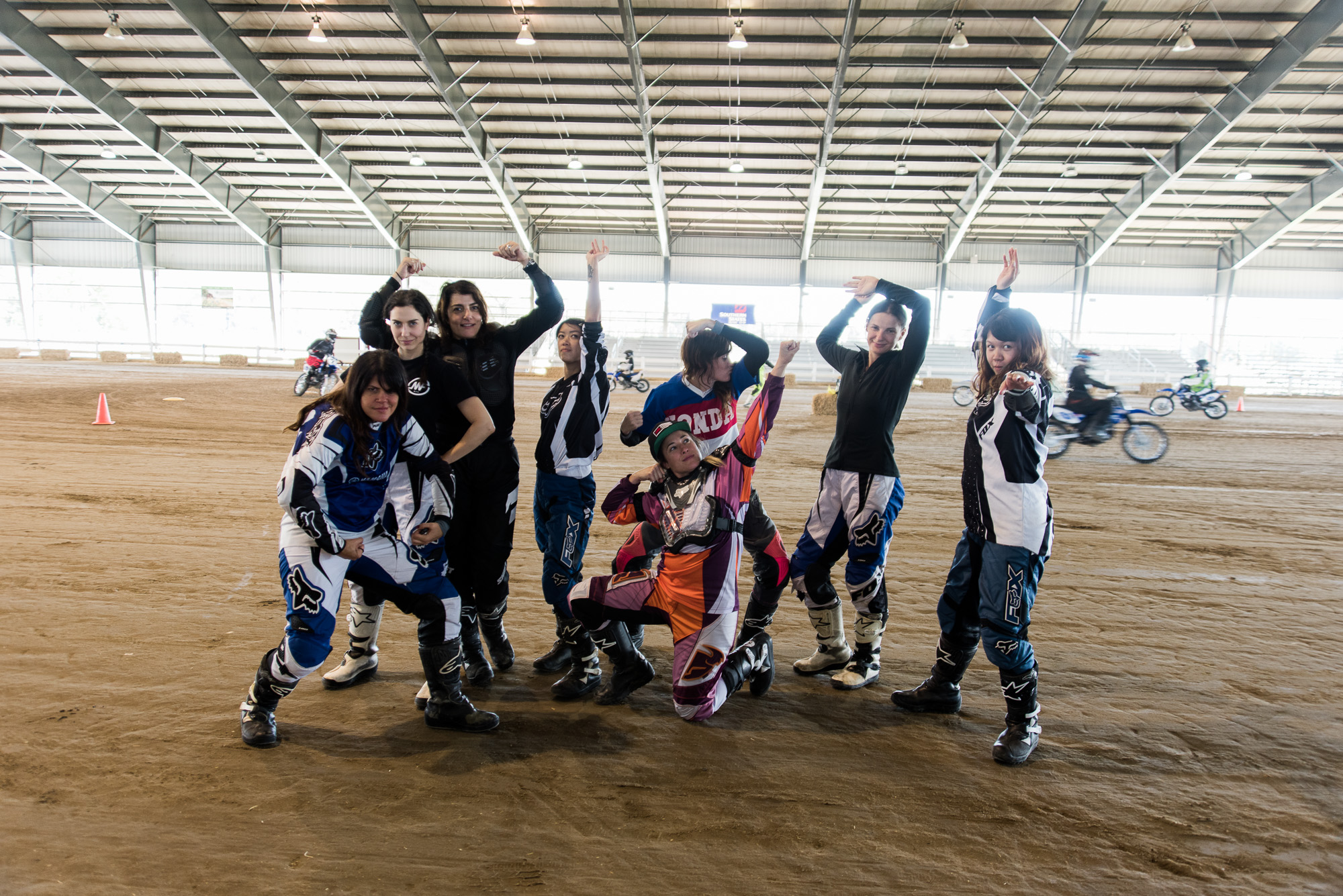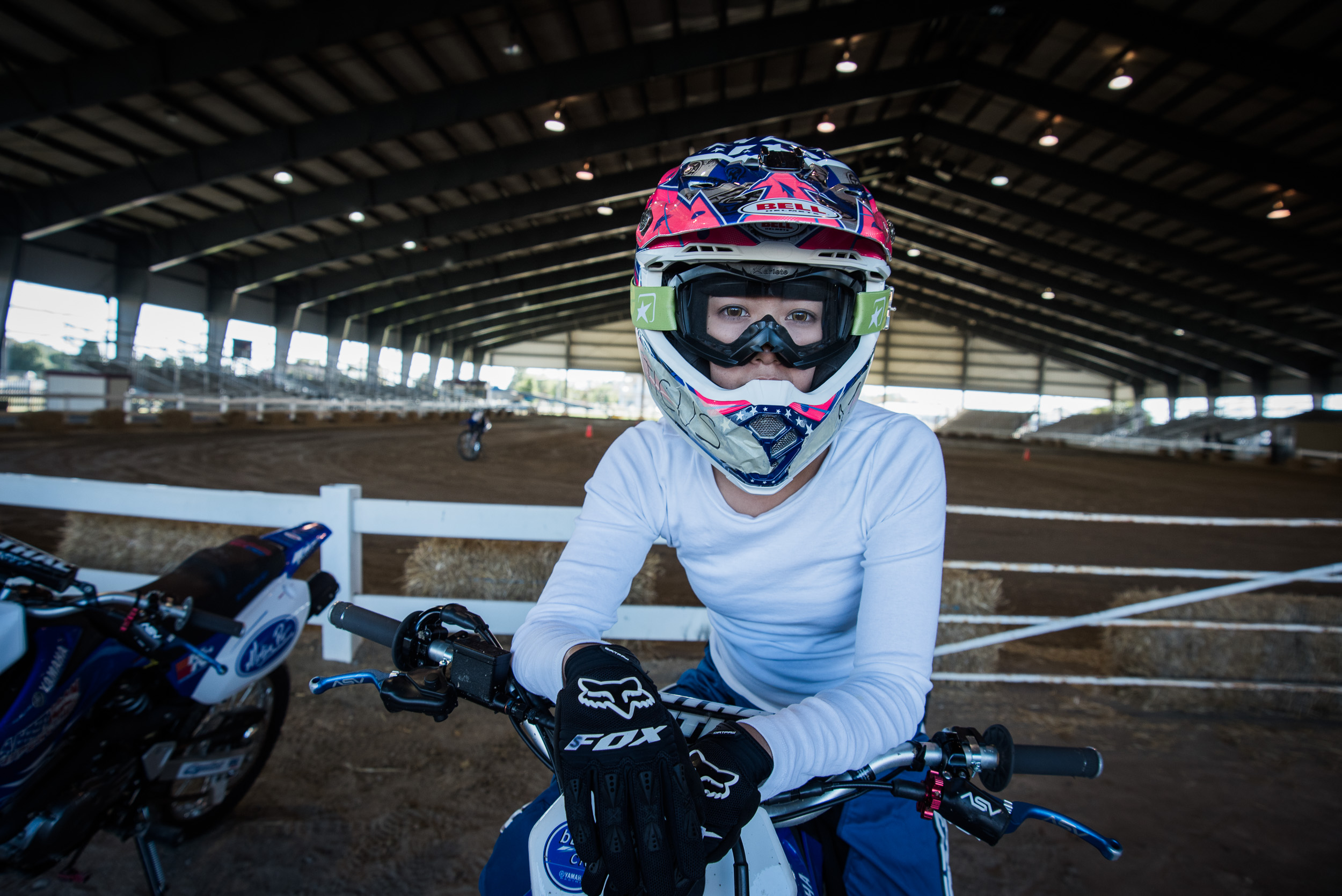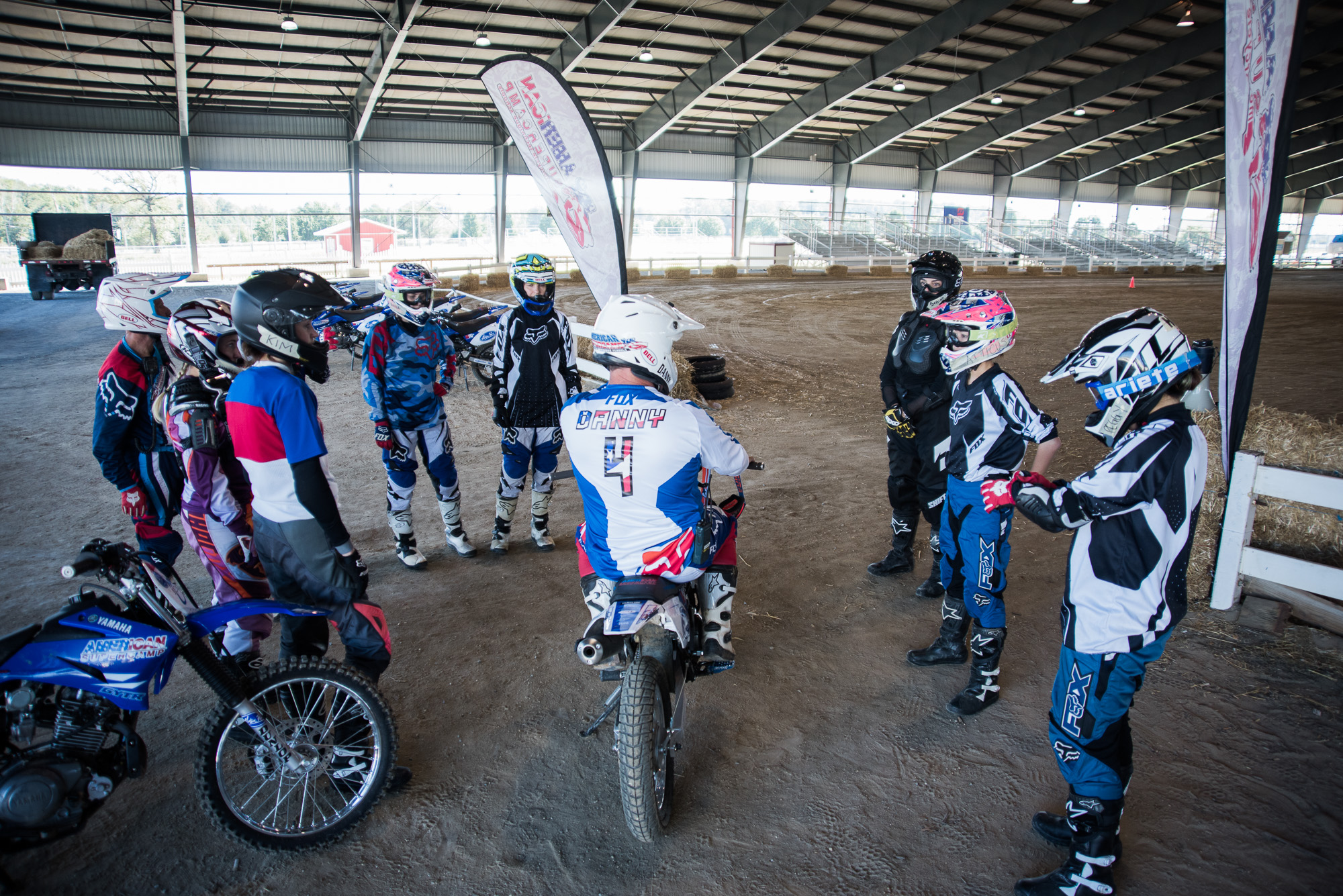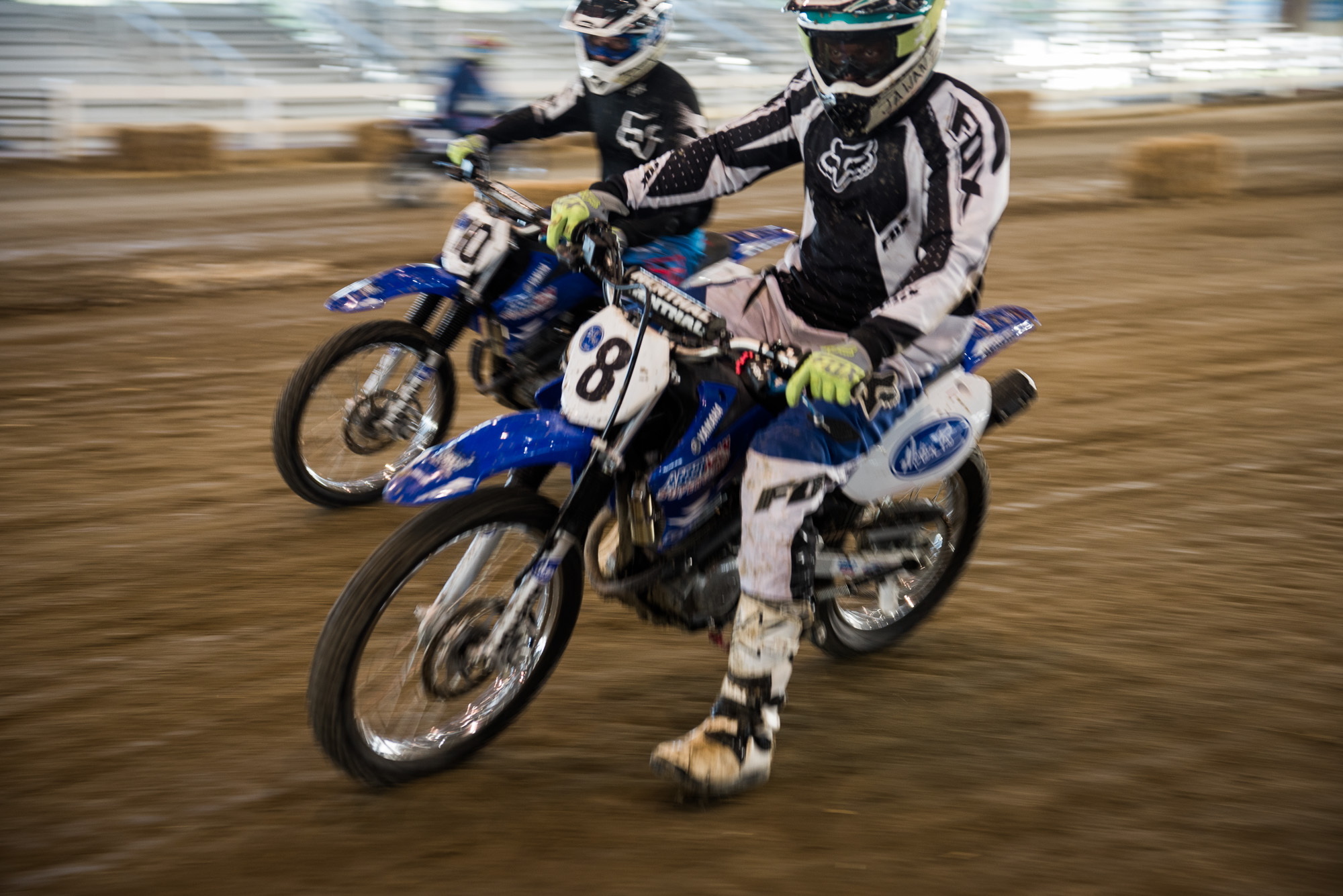American Supercamp: First Time ‘Round
By John Saponara
Back in the Fall I attended my first motorcycle school of any kind--Danny Walker's American Supercamp.
When I first started riding motorcycles in 1996, I had a friend give me a few tips in the nearby school parking lot on his Honda Rebel. I practiced for a few weeks and a month later I was off and rolling with a new M license classification and my own 1986 CM450E. Some might wonder what else there is to learn after 20 years of riding, but it is always important to keep an open mind, whether just beginning to learn or a seasoned veteran. "What can dirt riding really teach me about riding on highway or on the streets of New York?" I wondered.
Turns out, A LOT.
I had never ridden a dirt bike before. Some of the things I tried to do was go into this with low expectations, with humility, and with a willingness to learn. If you go in thinking you already know all there is to know or that this has no impact on the way you ride on the street--might as well save your money and stay home.
American Supercamp (ASC) is a flat track school where you ride Yamaha TTR125 dirt bikes around a dirt track. The camp is two 8-hour days, held at the Delaware State Fairgrounds and Raceway in a sleepy town in the middle of Harrington, Delaware (Danny also runs the two day courses in other locations around the US). The 30 or so riders are split into three groups based on their varying skill and experience.
On day one, Danny and his team of skilled instructors, all current or former distinguished riders, run a variety of drills to improve the skills you will need to get around the track. Danny starts out with a bit of his history, the instructors’ accomplishments, and some history of the sport. He spent some time talking to us about the bike and we got to know the Yamaha TTR125 really well.
We also got a chance to use and know the American Supercamp Simulator (ASS)-- a balance simulator which taught us about balance and proper form and technique that could then be applied on the actual TTR125s.
During the second half of day one, each respective group then got to apply those skills on a seemingly standard oval track. While I felt pretty comfortable going left, when we turned the opposite direction, where we didn't put our foot out for support, I felt a bit more challenged (we are taught to keep our brake foot on the brake pedal at all times or it might be hard to re-find your footing). The other thing that took unlearning was nearly everything I knew about braking. In most road riding, you're generally taught to depend more on the front brake and not the rear. On dirt, it's mostly the opposite. It takes some time to get a feel for how much pressure to apply to the brake while wearing the track boots (provided by ASC along with all the necessary gear). It also took reminding to not grab a fistful of clutch when you had that "Oh Shit" moment or else you will have a real OH SHIT moment going around a turn. I ended day one not too sore but with lots to think about heading into day two.
After a night's rest, we headed out for day two fueled by lots of coffee and a little confidence. Danny and his team had reset the track in a horseshoe configuration for the second day. We would have to apply many of the things we learned on our first day, but with the added complexity of left and right turns within the same track. On day one we had Danny, Robbie Petersen and Cam Petersen instructing us and pointing us in the right direction (figuratively & literally!); Day two the instructors who were added were Dalton Brisbois, an American Flat Track racer; Harlan Hildebrand, AMA Dirt Track racer; and 11 year old racer Ben Gloddy, who made it look so easy and flawless. They all have their own distinct style and tools that they try to impart to us, but it was also great watching them out there competing against each other and trying to push each other to be better; no matter your skill level, there's always something to learn.
Two things that stand out for me in day two: one, understanding the balance and weight shift of your body on dirt versus street riding and two, trying to master the braking into a turn all while changing direction and getting yourself in position to go into the straightaway.
One of the drills we did in day two was a straightaway with eight cones about 15 feet apart; we then had to maneuver those cones by shifting our hips in the opposite direction of the bike lean. If you hit the cones, you had to pull off to the side and do some push-ups for Danny (especially for his entertainment). This exercise was then incorporated into a full track run. Needless to say, I did a few push-ups that Saturday afternoon.
The second drill that really stood out was the braking drill; Dauntingly going full speed into a turn followed by braking and skidding out of the turn. The hardest part for me in this drill was figuring out the right time to apply my brake (I seemed to slow down too soon). Side note, Danny and his team recorded most of the drills so we get to sheepishly watch our mistakes and crashes in slow motion after each drill, which provides comic relief for all. Especially if anyone crashes into the camera. What I did find though was that after doing this drill repeatedly, applying it into real time around the track was easier. I still don't think I've mastered it, but am definitely more comfortable with it.
So, what is my takeaway after two days of work out on the dirt track? While I didn't have much experience going in, I never felt out of my element or uncomfortable. Danny and his group of instructors take the time to teach you and look at the little things you can do differently to get better each time around the track.
What tools did I add to my toolbox (a phrase Danny likes to use) that I can apply to my everyday riding? Danny talks a lot about peripheral vision and instinct while out on the track or on the road. Not focusing on a single point ahead of you, but on the whole scene in front of you, and being aware, that’s one major tool. Another tool I can see applied on the street, like when I went down trying to avert a pedestrian in New York City last spring on my Street Twin, is better using my weight and hips to maneuver the bike out of a tricky situation.
I can definitely see myself taking Danny's class again, trying it out in a different part of the country. In addition to learning so much this time around, it was great hanging with some old friends and making new ones within the motorcycle community.
There's another Supercamp session coming up in April! To learn more about the school, the instructors and all the important details visit Danny's website: www.americansupercamp.com
All photos are by John Saponara, Atticus Anonymous or Skip



